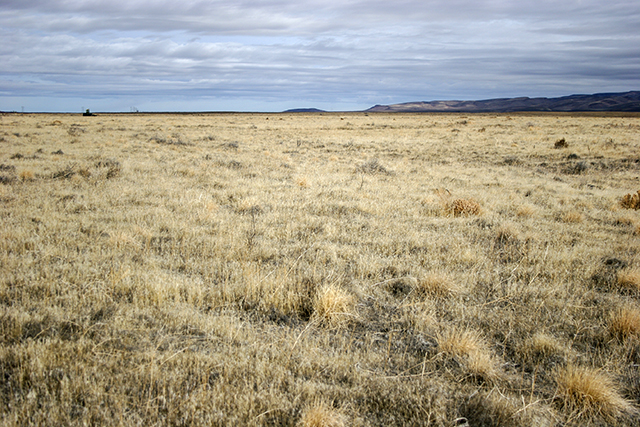Source: USDA Agricultural Research Service —By Sue Kendall, ARS Office of Communications.
Cheatgrass definitely lives up to its name. The aggressive, invasive weed from central Asia takes full advantage of any environment it finds itself in, cheating native plants out of the nutrients and water they need to thrive. After it was first spotted in Pennsylvania in 1861, cheatgrass found a home throughout the Intermountain West. Today it covers millions of acres, crowding out native plant species and fueling wildfires.

Charlie D. Clements, a rangeland scientist with the Agricultural Research Service (ARS) in Reno, Nevada, studies ways to control cheatgrass and restore rangelands to a healthy mix of plants, which in turn reduces wildfire threats, supports wildlife, and increases sustainable grazing resources.
In 2008, Clements and his colleagues at the Great Basin Rangelands Research Unit were approached by several stakeholders for help in rehabilitating their degraded rangelands, particularly cheatgrass-infested habitats. As fast as cheatgrass grows and spreads, the stakeholders’ control efforts hadn’t been successful. And while cattle will graze cheatgrass, they can only eat it for a short time before needing additional sources of nutrition.
The stakeholders were site owner Newmont Mining, Elko Land & Livestock, and the Nevada Department of Wildlife.
Says Clements, “We initiated an aggressive weed-control treatment using a pre-emergent herbicide that controls 95 to 98 percent of cheatgrass in the germination phase. The treated area was left fallow for 1 year and then seeded with various perennial species,” including several plants developed specifically for rangeland restoration by the ARS Forage and Range Research Unit in Logan, Utah. The researchers evaluated the performance of all the test plants and chose two of the Logan-developed plants, among others, for the restoration effort on the remaining 2,000 acres. The plants were Vavilov II Siberian wheatgrass and Yakima western yarrow.
“With the decrease in cheatgrass density and competition, the perennial grasses had more resources available to them. They became more vigorous and provided green forage through mid-July in most years,” Clements says.

Says Marlen Eve, ARS Deputy Administrator for Natural Resources and Sustainable Agricultural Systems, “The transformation shown in these photos is stunning, especially considering that there were some droughts in the 10 years between the two photos. Obtaining this type of transformation is not automatic. Rangeland restoration efforts often experience high failure rates, and our research is demonstrating ways to achieve much-improved stand establishment.”
The successful rehabilitation of this project area has significantly decreased the chance, season, rate, and spread of wildfire, improved wildlife habitat, and protected adjacent wildlife habitat from wildfire threats. The research and efforts put forth by this research unit have also significantly improved the sustainability of grazing resources.
Clements says that the stakeholders have made hundreds of thousands of acres available to his unit for research. “Newmont Mining alone has made 800,000 acres available for researching the numerous concerns on Great Basin rangelands,” he says. “The Great Basin Rangelands Research Unit appreciates our continued partnerships with stakeholders.”
For further details of this research, click here.
